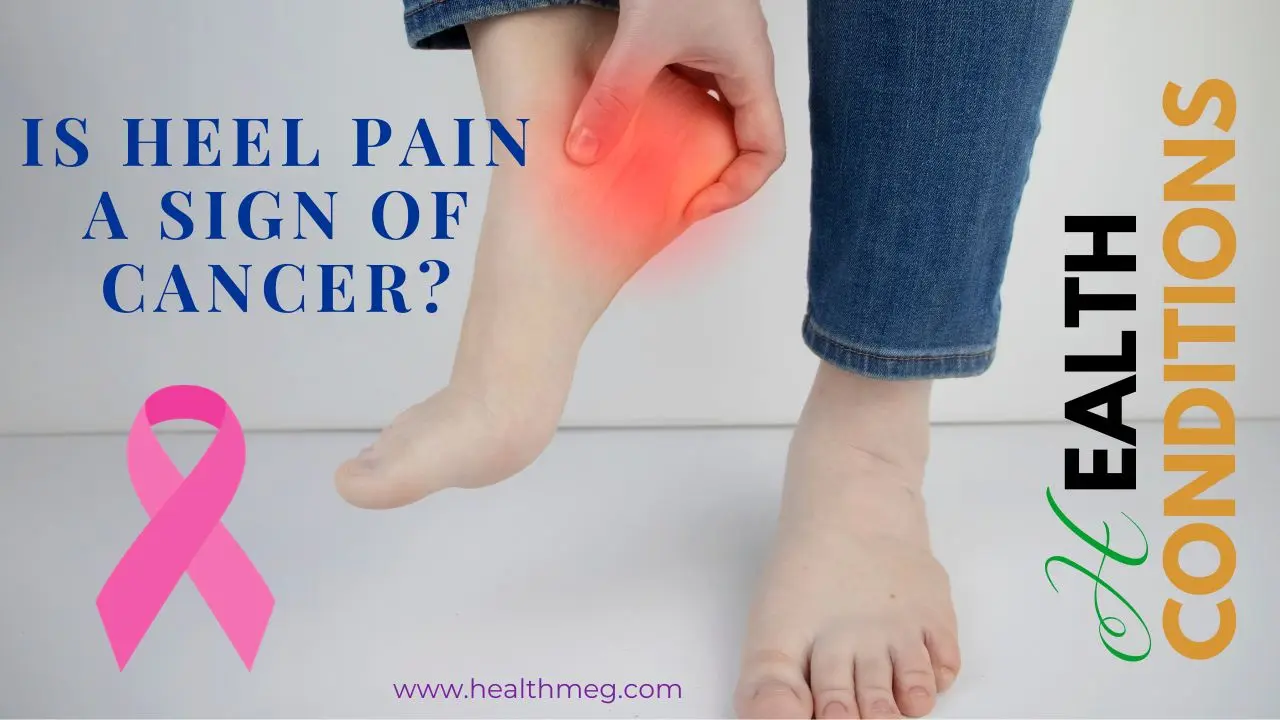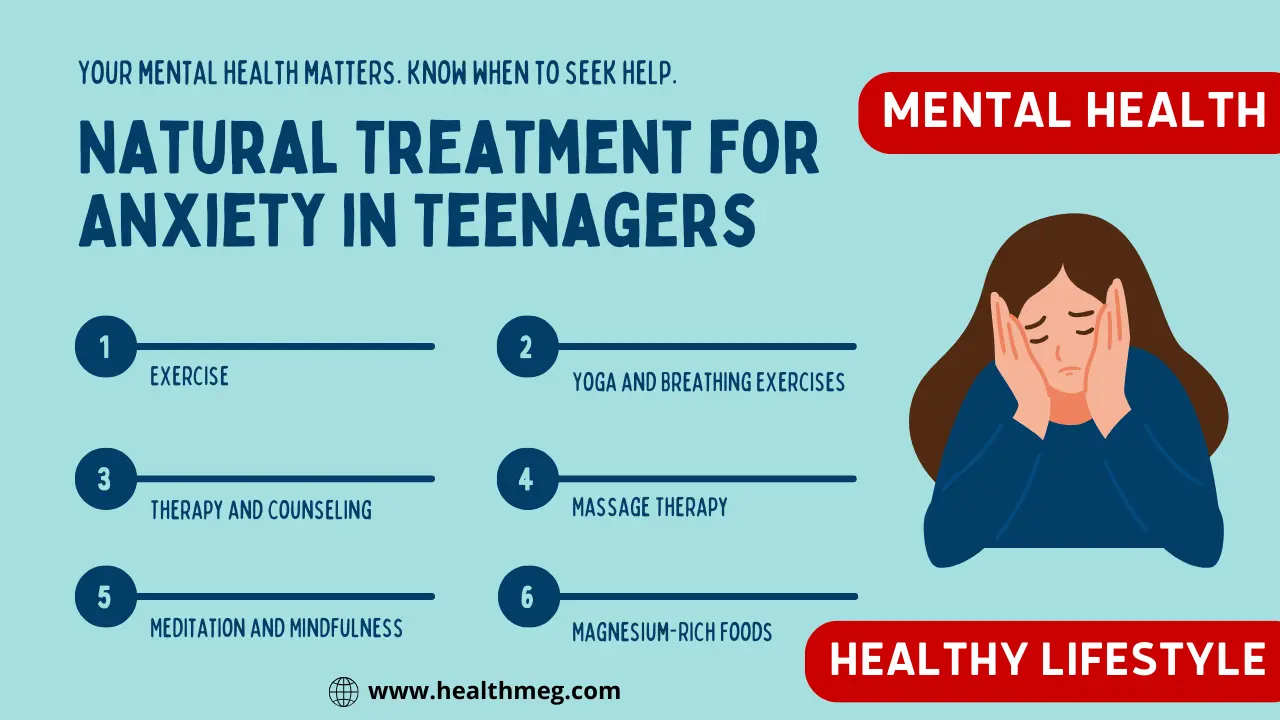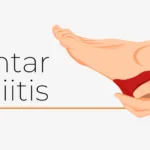Introduction
Heel pain is an extremely common complaint that affects millions of people. While there are various benign causes like plantar fasciitis, Achilles tendinitis, and heel spurs, many people understandably worry that their heel pain could be a sign of something more sinister like cancer.
This fear and anxiety are completely valid, given how devastating and life-altering a cancer diagnosis can be. This comprehensive article aims to answer the question “Is Heel Pain: a Sign of Cancer?” and unpack the truth behind heel pain and cancer.
This comprehensive article aims to unpack the truth behind heel pain and cancer, understand the common benign causes, outline warning signs that warrant medical advice, and provide some tips for managing this troublesome condition. Read on for an evidence-based perspective on heel pain and its relationship with cancer.
Do read the People Also Ask (FAQs) about this topic.
Key Takeaway
| Key Takeaway | Summary |
|---|---|
| Likelihood of cancer | Heel pain as the only symptom of cancer is extremely rare. Bone cancer isolated to the heel is very uncommon. |
| Most common causes | Plantar fasciitis, Achilles tendinitis, heel spurs, arthritis. Benign causes are far more likely. |
| Red flags | Severe constant pain, swelling, limping, numbness, unexplained weight loss. Need prompt medical evaluation. |
| Diagnostic tests | X-rays, MRI, CT, bone scan, biopsy. To identify the cause and rule out pathology. |
| Treatment | Rest, ice, OTC meds, orthotics, exercises, injections. Surgery is rarely needed. |
| Outcome | With proper treatment, most heel pain improves without major intervention. |
Understanding Heel Pain
Heel pain refers to any pain or discomfort felt in and around the heel area. It can occur on the bottom of the heel (plantar side) or the back of the heel nearer the Achilles tendon. Common locations include:
- Plantar fascia: The thick fibrous band of tissue that runs along the bottom of the foot from the toes to the heel bone. Inflammation here causes plantar fasciitis.
- Achilles tendon: The largest tendon in the body which attaches the calf muscles to the back of the heel bone. Achilles tendonitis is inflammation of this tendon.
- Heel bursa: Small fluid-filled sacs that cushion the heel bone. Bursitis is inflammation of the bursa.
- Heel pads: Shock-absorbing fat pads on the bottom of the heel.
Heel pain has many potential causes including:
| Cause | Symptoms |
|---|---|
| Plantar Fasciitis | The most common cause, resulting from overuse, strain, and inflammation of the plantar fascia. Causes stabbing pain when taking the first steps in the morning. |
| Achilles Tendinitis | Inflammation and irritation of the Achilles tendon. Causes pain in the back of the heel made worse with activity. |
| Heel Bursitis | Swelling of the bursa sacs. Leads to pain and tenderness on the back, side, or bottom of the heel. |
| Heel Spurs | Abnormal calcium deposits on the heel bone. Symptoms include chronic throbbing, and stabbing pain. |
| Stress Fractures | Tiny cracks in the heel bone from overuse and repetitive impact. Cause pain that worsens with weight-bearing. |
| Tarsal Tunnel Syndrome | Compression of the nerve that runs along the inside of the ankle into the foot. Leads to shooting pain, numbness, and tingling. |
| Arthritis | Inflammation and deterioration of joints. Causes heel stiffness and pain that worsens with activity and improves with rest. |
| Gout | The Buildup of uric acid crystals in the joints. Leads to redness, swelling, and intense heel pain. |
Less common causes include nerve issues like neuropathy, autoimmune disorders like lupus, heel bruises, and heel pads thinning with age. Proper diagnosis is key to differentiating between these causes.
Is Heel Pain a Sign of Cancer?
The idea of heel pain being a sign of cancer is understandable given how devastating a cancer diagnosis can be. However, the truth is that primary cancer symptoms localized solely in the heel are extremely rare. Metastasis or the spread of cancer to the heel bone (calcaneus) is even more uncommon.
Bone metastasis, meaning the spread of cancer to the bones, does occur with advanced breast, prostate, lung, kidney and thyroid cancer. Tumours can metastasize anywhere, but the most frequent sites are the spine, hips, skull, ribs, and shoulders – not the heel bone.
When a tumour does metastasize to a heel bone, it is usually not the only site of metastasis. Multiple tumours often spread to several locations like the spine, skull, pelvis, and arms. Isolated heel metastasis with no tumours anywhere else is improbable.
The few case reports of primary bone cancer like lymphoma isolated to the heel bone do exist in medical literature but are exceedingly rare. Out of the thousands of heel pain cases, maybe a handful will end up being cancer-related.
So while it is not completely impossible, the chances of persistent heel pain being the first or only presenting symptom of cancer is extremely low. Benign causes like plantar fasciitis are by far the most common source of heel discomfort.
The NCBI website talks about the study “Lung cancer presenting as heel pain: A case report.“
When to Worry and Seek Medical Advice
Although cancer is an unlikely cause, it is still crucial to seek medical advice for any heel pain that is severe, persistent, or getting worse instead of better with self-care. Some key red flags indicative of potential serious causes include:
- Severe pain even at rest that worsens with any weight-bearing
- Night pain that interferes with sleep
- Sudden onset of heel pain with no preceding injury
- Radiating pain that shoots up the leg or into the foot
- Numbness, tingling, or burning sensations in the heel
- Swelling, redness, and warmth suggest infection or inflammation
- Limping and difficulty walking
- Unexplained weight loss, fatigue, fever suggestive of systemic illness
- History of cancer with risk of metastasis
If heel pain is accompanied by any of the above symptoms, prompt medical evaluation is warranted. Based on the clinical exam and severity of symptoms, the doctor may order some diagnostic tests:
- X-rays to assess heel bone structure and check for fractures
- MRI scans to visualize soft tissue and check for tumours
- CT scans for a detailed 3D view of the heel anatomy
- Bone scans to detect areas of increased metabolic activity suggest cancer
- Biopsy of abnormal tissue for microscopic examination
Early diagnosis and treatment are vital for the best outcomes. Even if cancer is not found, identifying the true underlying cause is key to the proper management of chronic heel discomfort.
Managing Heel Pain
For garden-variety heel pain caused by plantar fasciitis, Achilles tendinitis and other benign conditions, there are some simple home remedies and lifestyle modifications that can help provide symptom relief:
- Rest and avoid activities that exacerbate pain
- Ice packs applied to the heel for 15 minutes 2-3 times a day to reduce inflammation
- Heel stretches like plantar fascia and Achilles tendon stretches
- Over-the-counter anti-inflammatory medication like ibuprofen to ease swelling and pain
- Well-cushioned shoes with arch support or orthotics
- Night splints to keep the plantar fascia and Achilles tendon gently stretched
- Lose weight if overweight or obese to minimize strain on the heel
- Physical therapy focusing on stretches, mobilizations and pain relief modalities
- Avoid going barefoot and wear supportive footwear, even at home
- Limit activity on hard, uneven surfaces which put added stress on heels
- Taping or bracing to help support the plantar fascia and Achilles tendon
For moderate to severe cases, medical interventions may be warranted based on the underlying cause:
- Steroid injections to reduce localized inflammation
- Extracorporeal shockwave therapy to stimulate healing
- Surgery in rare cases to remove heel spurs or release tight plantar fascia
Conclusion
In summary, while it is understandable to worry, heel pain in isolation is an extremely rare first sign of cancer. The vast majority of cases are due to non-cancerous causes like plantar fasciitis, Achilles issues, arthritis and bruising.
However, any heel pain that is worsening or accompanied by other concerning symptoms should be promptly evaluated by a doctor. Early diagnosis and management are key to resolving chronic heel pain, regardless of the cause. Being proactive with self-care while also seeking medical advice when appropriate is crucial for long-term relief.
With the right treatment plan tailored to the underlying condition, most patients see significant improvement in their heel pain and regain their mobility and quality of life without serious interventions. So rest assured – simple heel pain does not equate to cancer. Stay vigilant, but don’t let worry overshadow hope.
People Also Ask (FAQs)
Q) What type of cancer causes heel pain?
A) The most common cancers that can spread to the heel bone and cause pain are breast, lung, prostate, kidney and thyroid cancer. Primary bone cancer like osteosarcoma arising right in the heel is extremely rare.
Q) When should I be concerned about heel pain?
A) Seek medical advice if the heel pain is severe, constant, worsening, or accompanied by other symptoms like swelling, redness, numbness, tingling, limping, fever or unexplained weight loss.
Q) What is the reason for heel pain?
A) The most common reasons are plantar fasciitis, Achilles tendonitis, heel spurs, arthritis, stress fractures and bruising. Proper diagnosis is important to identify the underlying cause.
Q) Why is my heel pain not going away?
A) Persistent heel pain can be due to improper treatment, underlying medical conditions, bone injuries or rarely, an undiagnosed tumour. See a podiatrist or orthopaedic doctor if home remedies and rest don’t resolve it.
Q) Is heel pain due to uric acid?
A) Increased uric acid levels can cause gout which leads to intense heel pain, swelling, warmth and redness. Other common gout symptoms include joint pain, fever and nausea.
Q) Can cancer start in the heel?
A) Primary bone cancer originating in the heel bone is exceptionally rare. When it does happen, osteosarcoma is the most common type. Symptoms may include swelling, pain, fractures and difficulty walking.
Q) What are the 5 common causes of heel pain?
A) The 5 most common causes are:
- Plantar fasciitis
- Achilles tendonitis
- Heel spurs
- Heel bruises
- Stress fractures
Q) Is heel pain related to the kidney?
A) Heel pain itself is not directly related to kidney health. However, some kidney conditions like renal osteodystrophy can weaken bones and make heels more prone to injuries and pain.
Q) What deficiency causes heel pain?
A) Nutritional deficiencies like low calcium, vitamin D, magnesium and boron can contribute to bone loss and heel pain. Ensuring adequate intake of these nutrients supports bone health.
Q) How do I stop heel pain?
A) Rest, ice packs, OTC pain medication, orthotics, stretching exercises, night splints and shockwave therapy are common treatments. See a doctor if home remedies don’t resolve persistent heel pain.
Q) Is walking good for heel pain?
A) Gentle walking and exercise is usually encouraged, but any activity that worsens pain should be avoided until healing occurs. Low-impact exercise like swimming is a good alternative.
Q) What is a good remedy for heel pain?
A) Ice packs, OTC anti-inflammatory medication, well-cushioned shoes, heel stretches, orthotics and plantar fascia massages are some good at-home remedies for plantar fasciitis and common heel pain.
Q) Which disease symptom is heel pain?
A) Heel pain can be a symptom of many foot conditions like plantar fasciitis, Achilles tendonitis, arthritis, gout and bone injuries like fractures and spurs. Proper diagnosis is key.
Q) What does cancer on the heel look like?
A) Heel cancer is so rare there are limited images. It may present as a growing mass, swelling, redness, ulcers, skin changes, deformed heel, or fracture if the tumour invades the bone.
Q) What does bone cancer in the heel feel like?
A) Symptoms may include deep aching pain, tenderness, swelling, difficulty bearing weight, fractures, and a mass if the tumour is large enough to be seen or felt through the skin.
Q) Can your feet show signs of cancer?
A) Certain foot problems like non-healing ulcers, swelling, new pain or numbness/tingling can very rarely be an early symptom of cancer spread to the bones. But this is uncommon.












